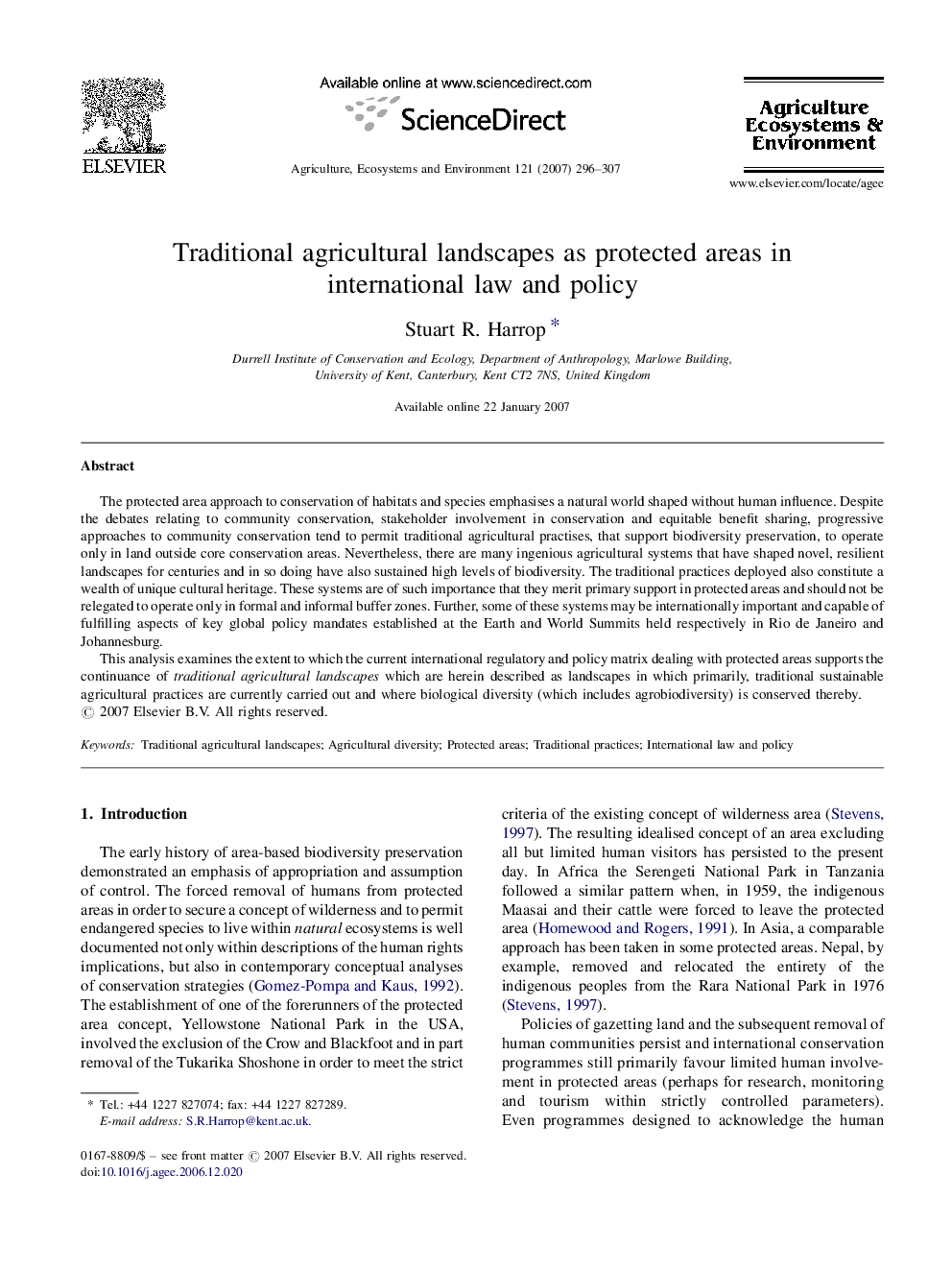| Article ID | Journal | Published Year | Pages | File Type |
|---|---|---|---|---|
| 2415732 | Agriculture, Ecosystems & Environment | 2007 | 12 Pages |
The protected area approach to conservation of habitats and species emphasises a natural world shaped without human influence. Despite the debates relating to community conservation, stakeholder involvement in conservation and equitable benefit sharing, progressive approaches to community conservation tend to permit traditional agricultural practises, that support biodiversity preservation, to operate only in land outside core conservation areas. Nevertheless, there are many ingenious agricultural systems that have shaped novel, resilient landscapes for centuries and in so doing have also sustained high levels of biodiversity. The traditional practices deployed also constitute a wealth of unique cultural heritage. These systems are of such importance that they merit primary support in protected areas and should not be relegated to operate only in formal and informal buffer zones. Further, some of these systems may be internationally important and capable of fulfilling aspects of key global policy mandates established at the Earth and World Summits held respectively in Rio de Janeiro and Johannesburg.This analysis examines the extent to which the current international regulatory and policy matrix dealing with protected areas supports the continuance of traditional agricultural landscapes which are herein described as landscapes in which primarily, traditional sustainable agricultural practices are currently carried out and where biological diversity (which includes agrobiodiversity) is conserved thereby.
